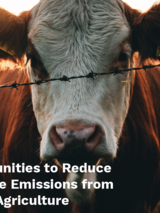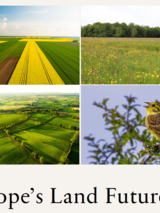2022
2021

Abstract
Abstract
Based on analysis in the reports: Creating a Sustainable Food Future (WRI, World Bank, UNDP, UNEP 2019), and A Strategy to Make Danish Agriculture Carbon Neutral (WRI 2021, forthcoming).
U.S. agriculture is simultaneously climate-efficient and also generates agricultural emissions per person that are among the highest in the world. Agricultural mitigation is equivalent to the energy sector 25 years ago when solar, wind and battery technologies were promising but had yet to demonstrate cost-effectiveness. To reduce both U.S. and global agricultural emissions, the core need is to fund promising innovations through joint projects of farmers and researchers.
2020
Abstract
The Netherlands is considering whether to reform its policies of burning forest biomass under the claim that it is low carbon or carbon neutral. A recent report by the Netherlands Environmental Assessment Agency recommended that the Netherlands continue to rely on wood so long as it is of pulp-quality, which typically means logs the length of a long truck and up to around 9 inches in diameter. The report's major argument is that this quality of wood is in effect carbon free because it could be diverted to wood pellets for energy use but would not be replaced by harvesting additional wood. It is supposed to be carbon-free in the way that one person's use of a gallon of gas would be free if that meant another person used one gallon less.
However, pulp-qualiity wood is the wood used for all paper products, cardboard and contributes to particle boards used for furniture. The world's demand for pulpwood grew 68% between 1997 and 2017 and will continue to grow. In addition, although the U.S. produces 25% of the world's pulpwood, if all that pulpwood were turned into wood pellets for Europe, it would supply only 1.6% of Europe's energy demand, just 1/9 of the renewable energy European law requires to be added between 2017 and 2030. The Netherlands report in effect assumes that if Europe burns this wood, Americans will stop using toilet paper, cardboard boxes and composite furniture.
You can see these comments by me, William Moomaw, Mary Booth and Michael Norton to an advisory committee considering the issue.


